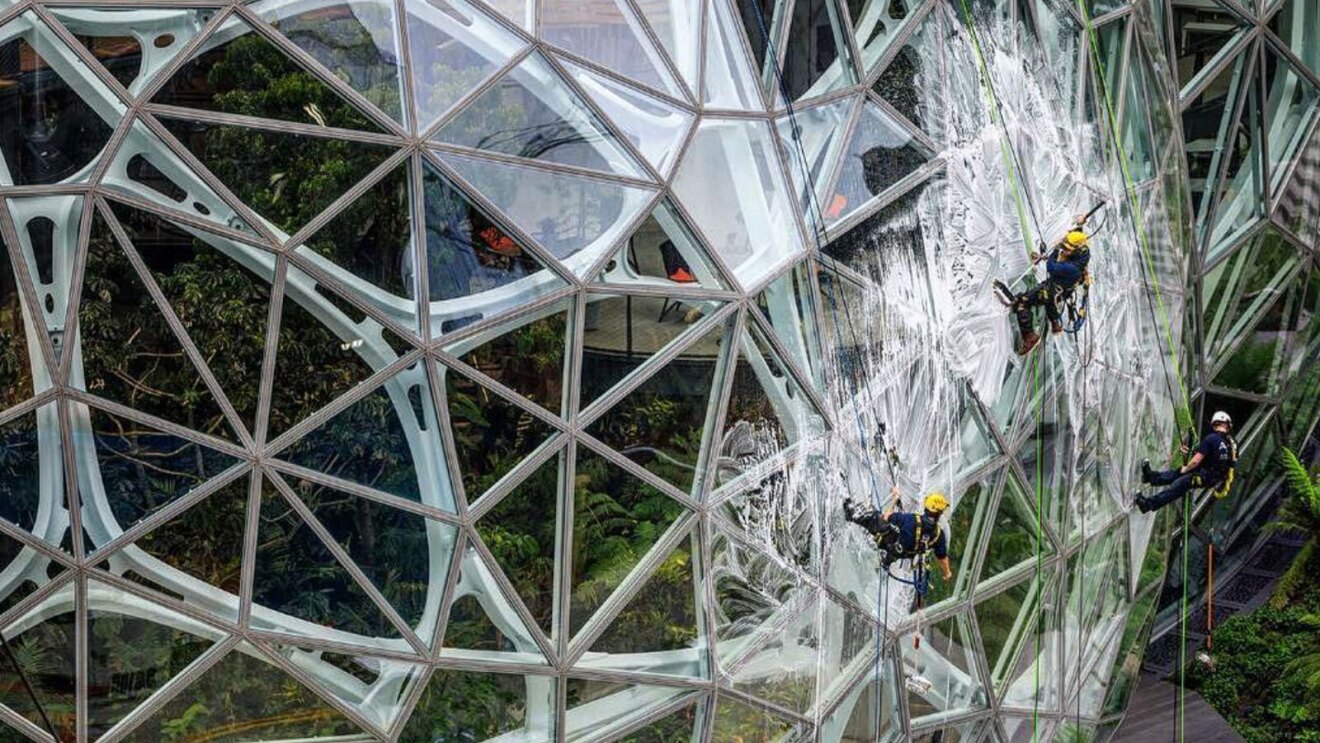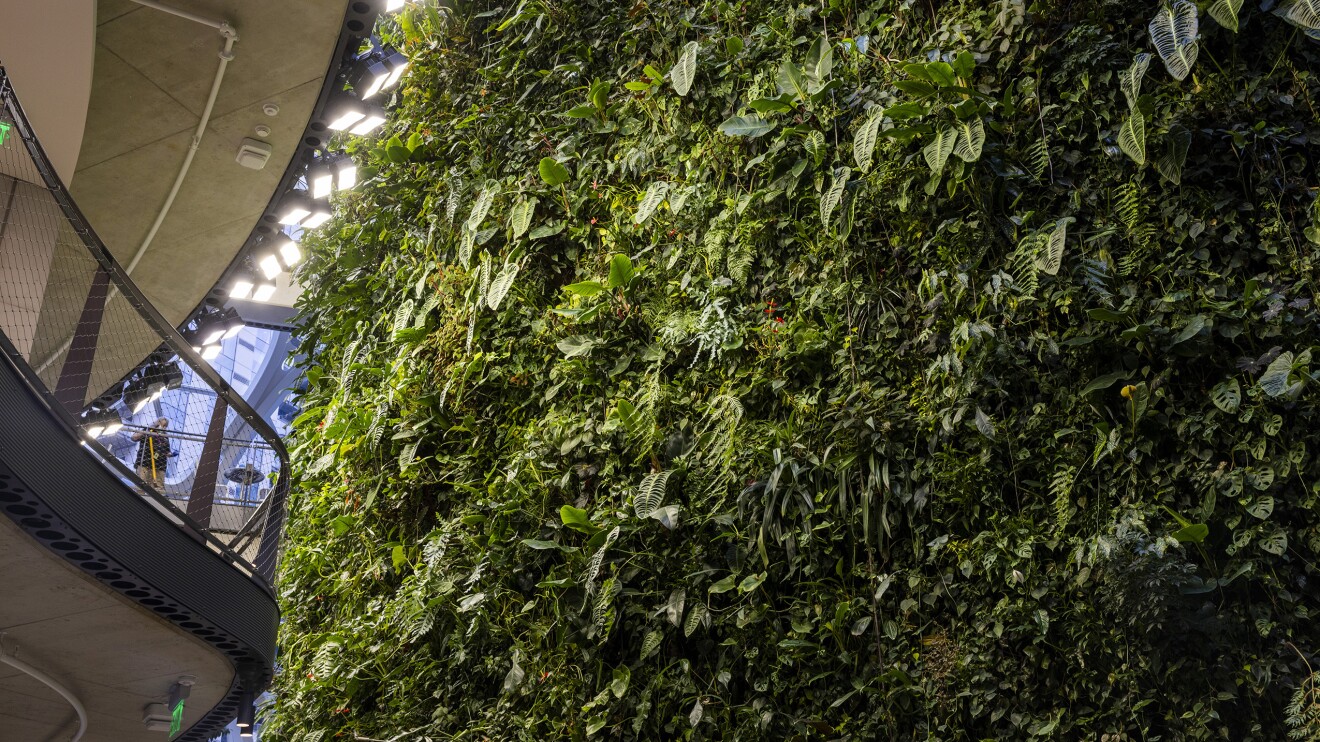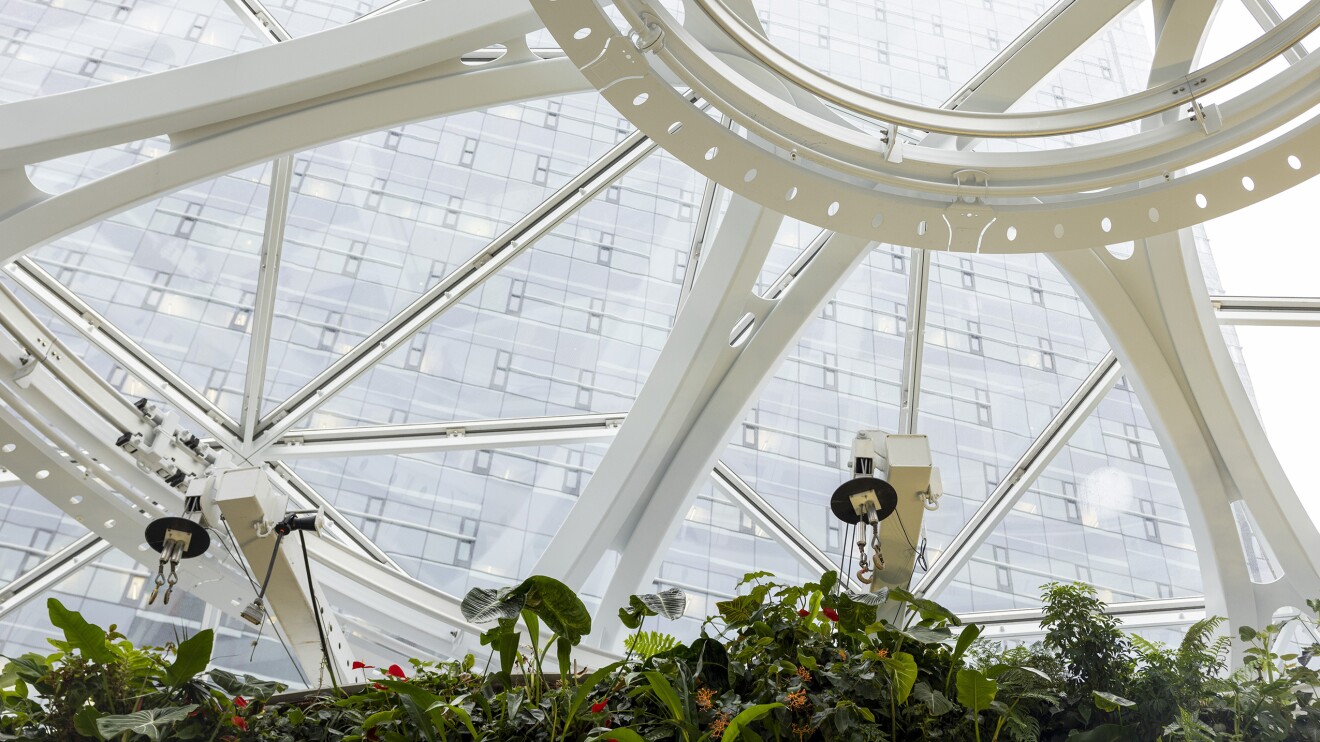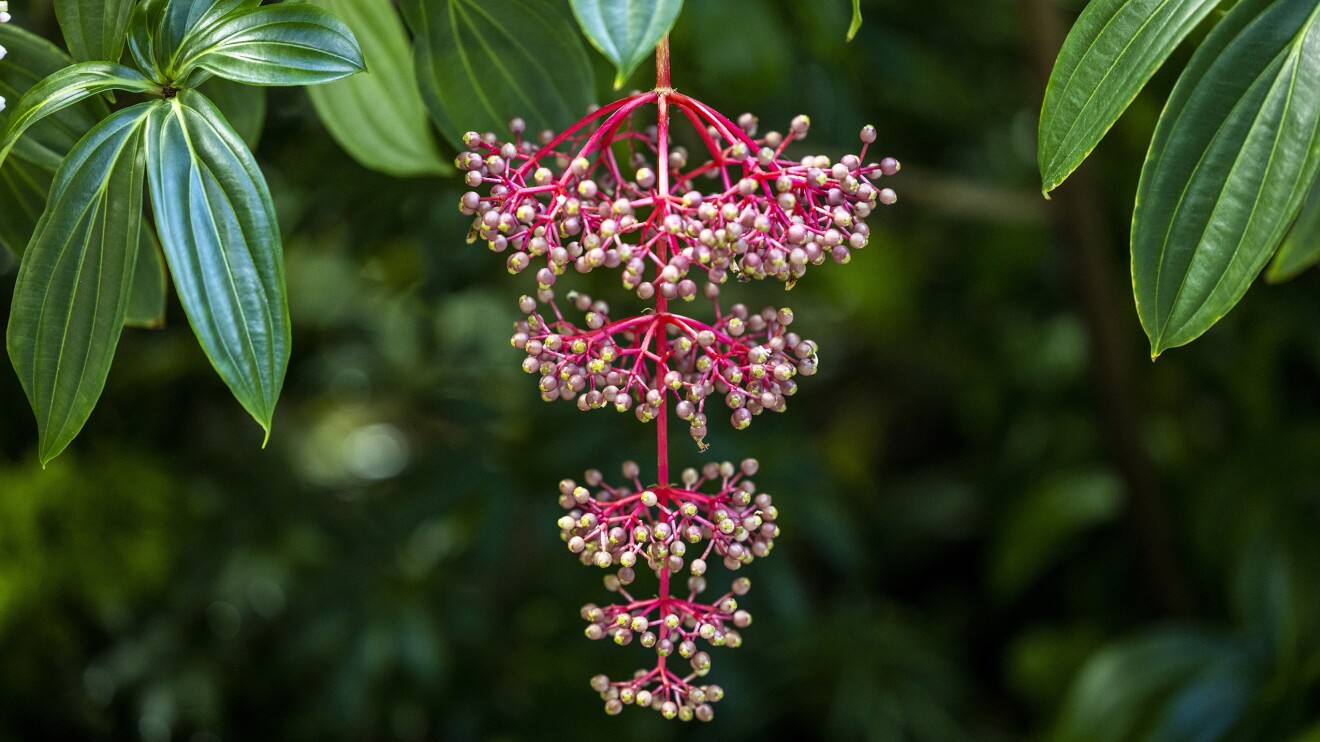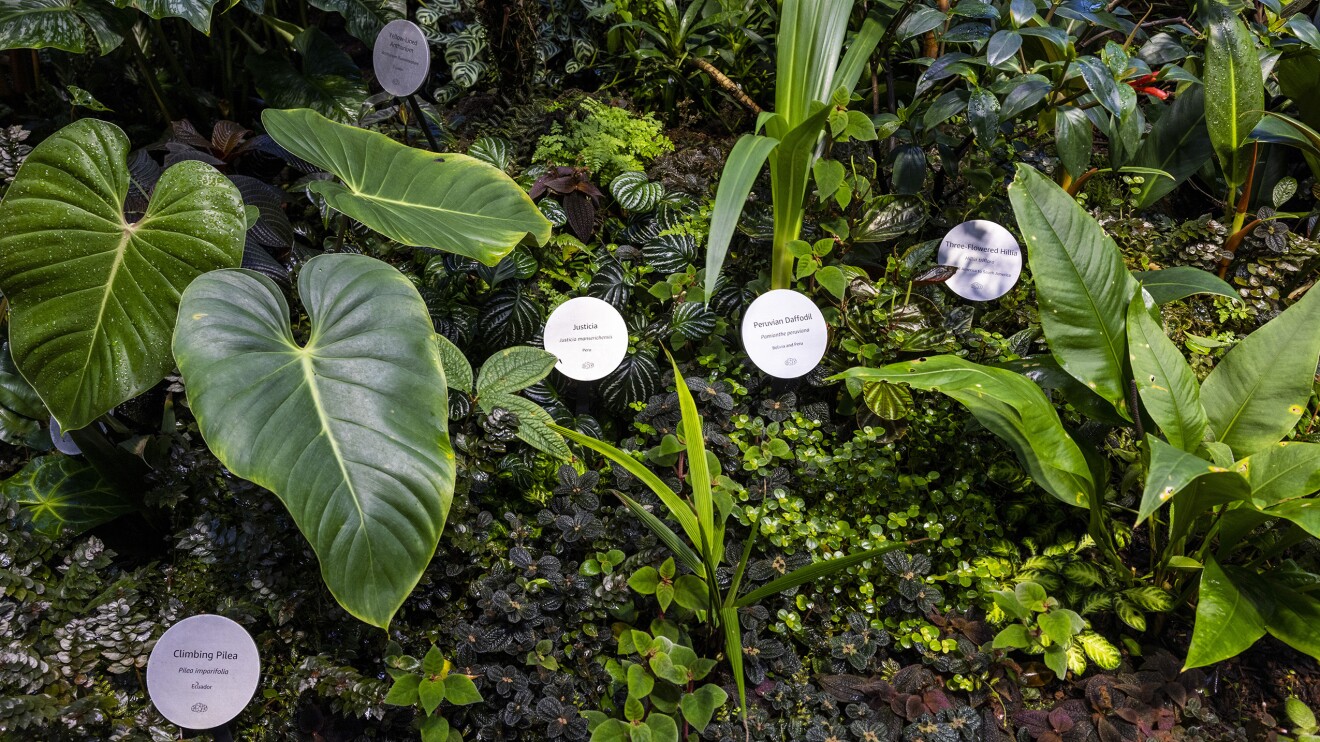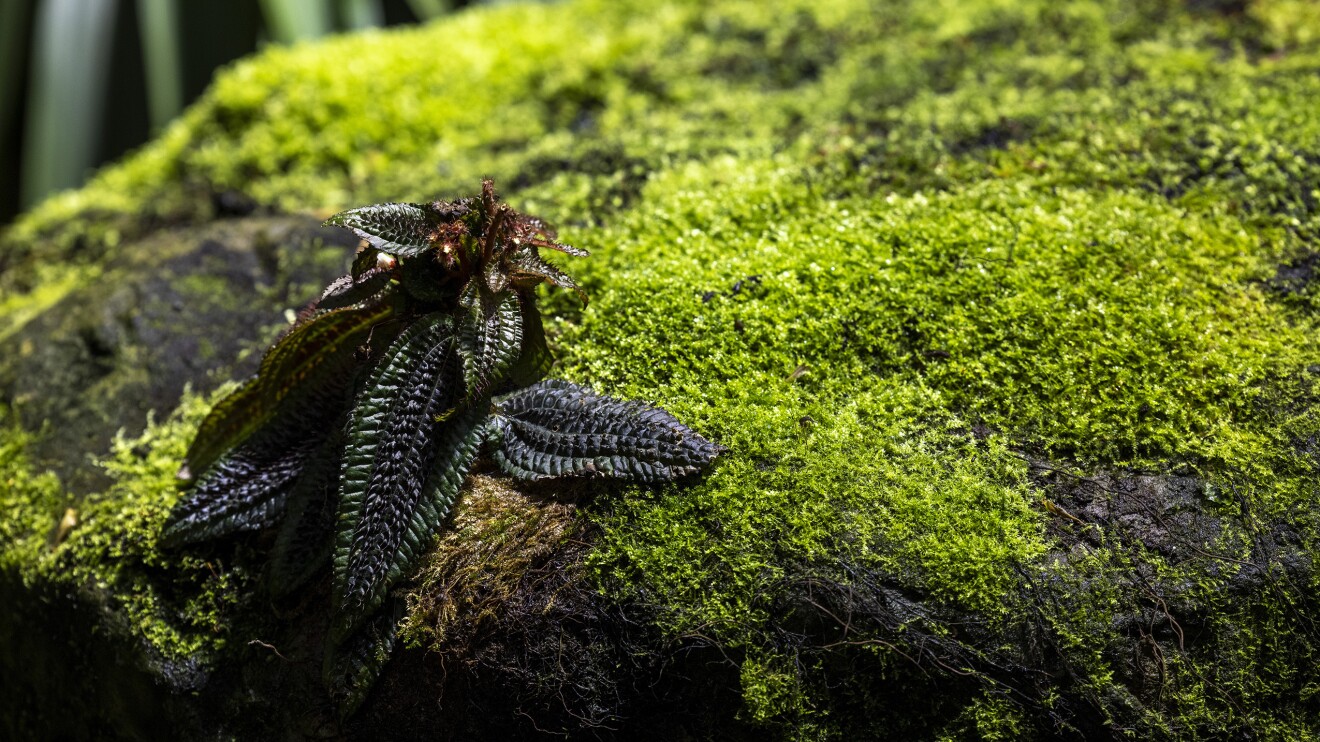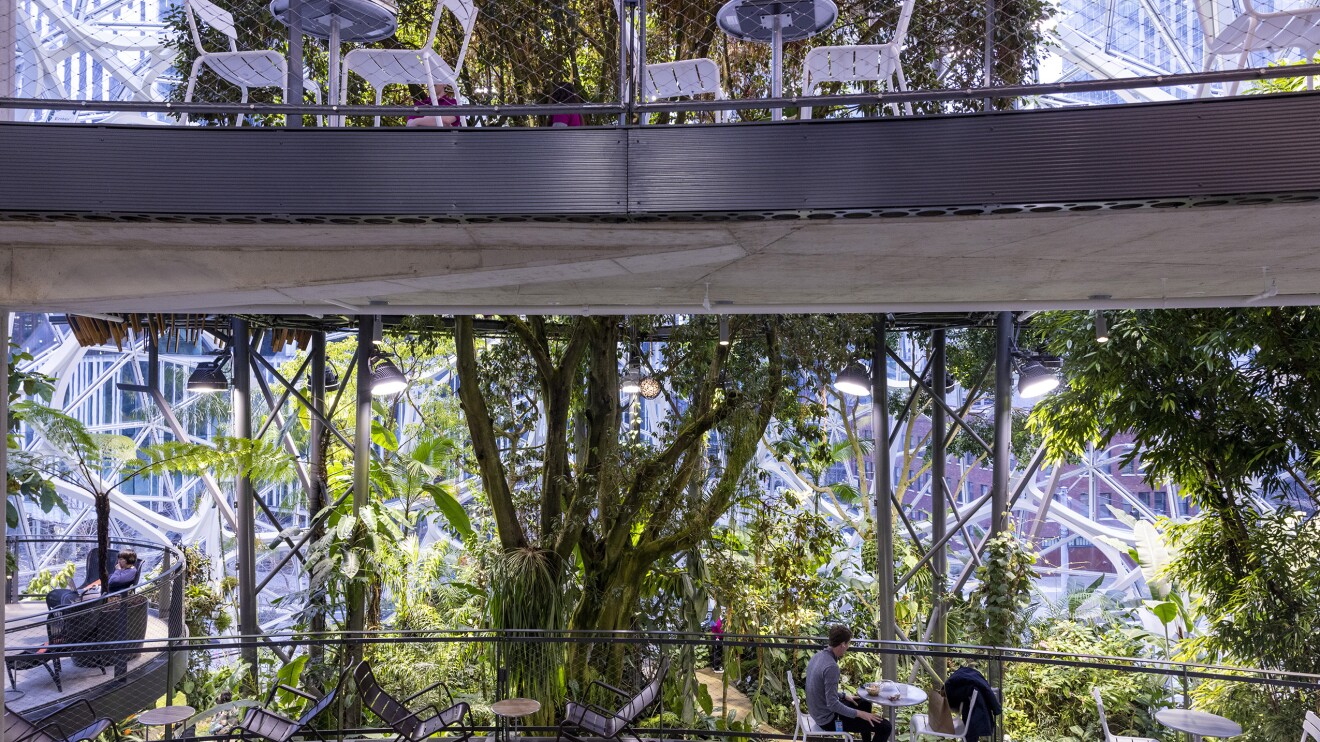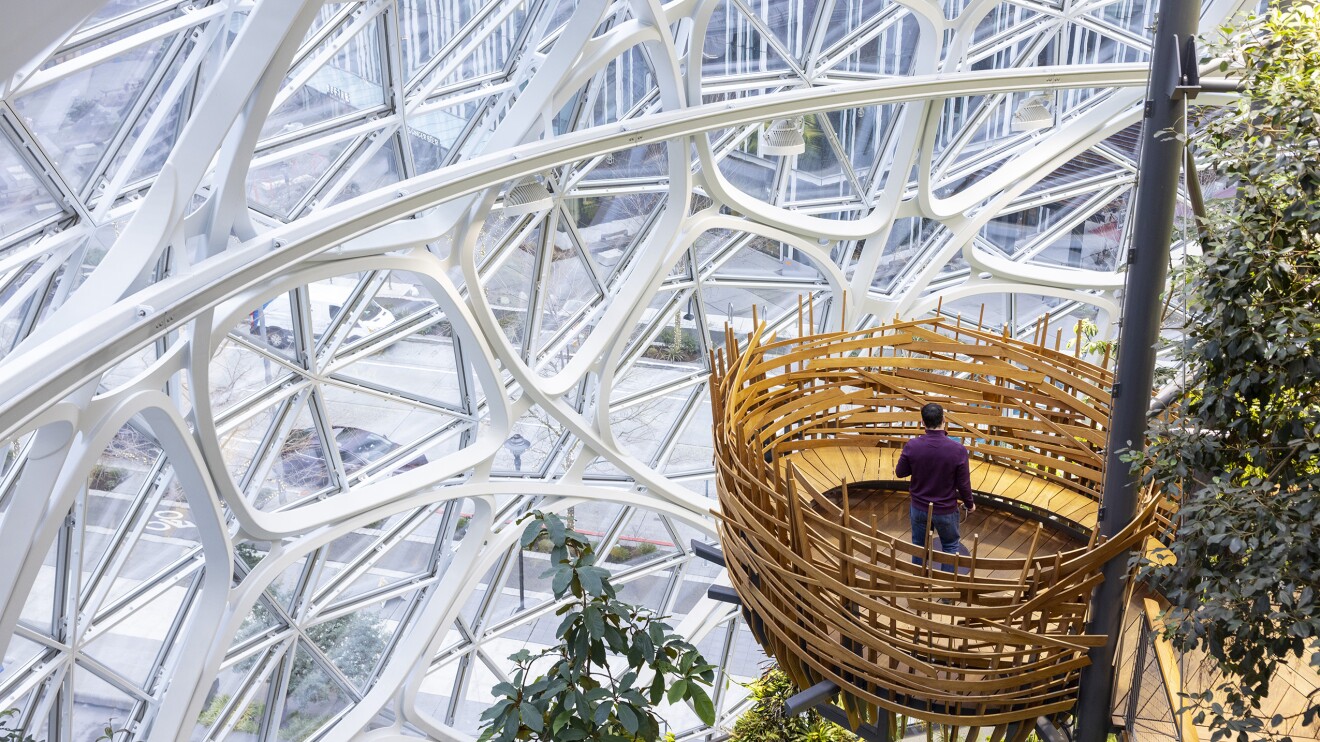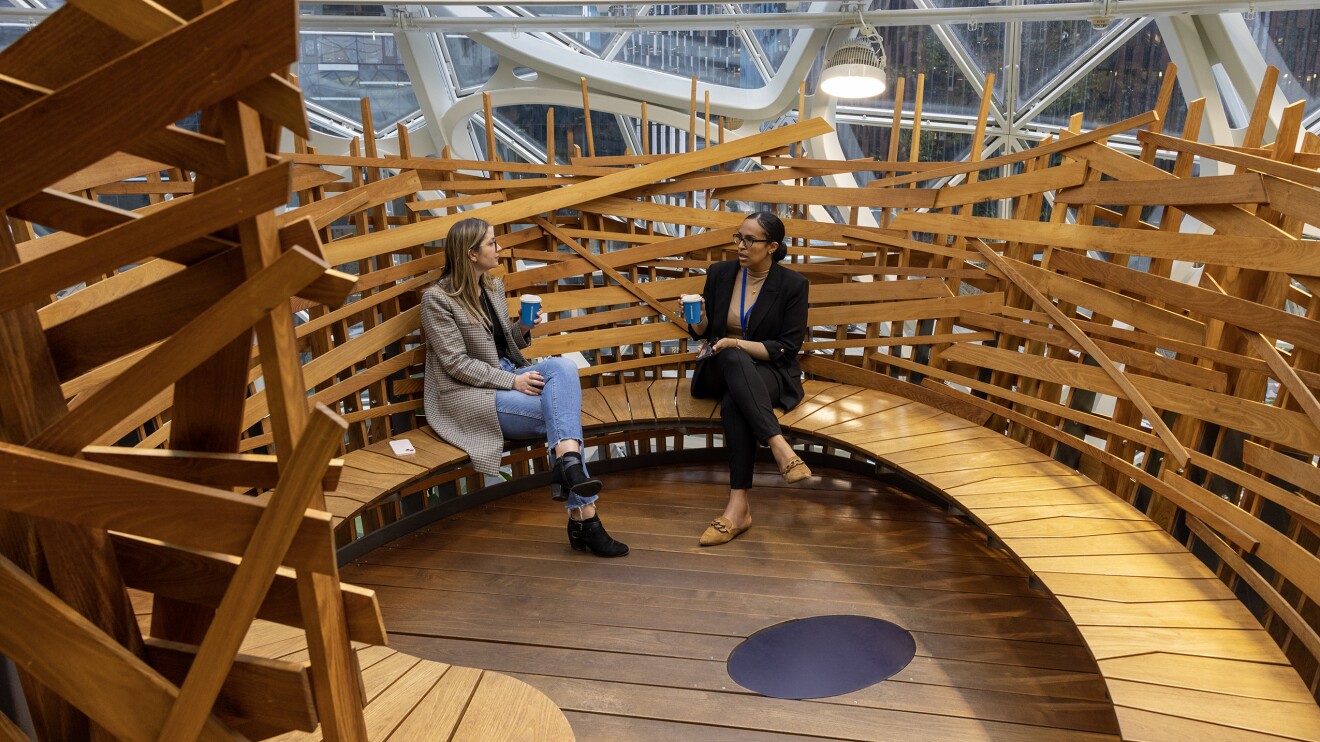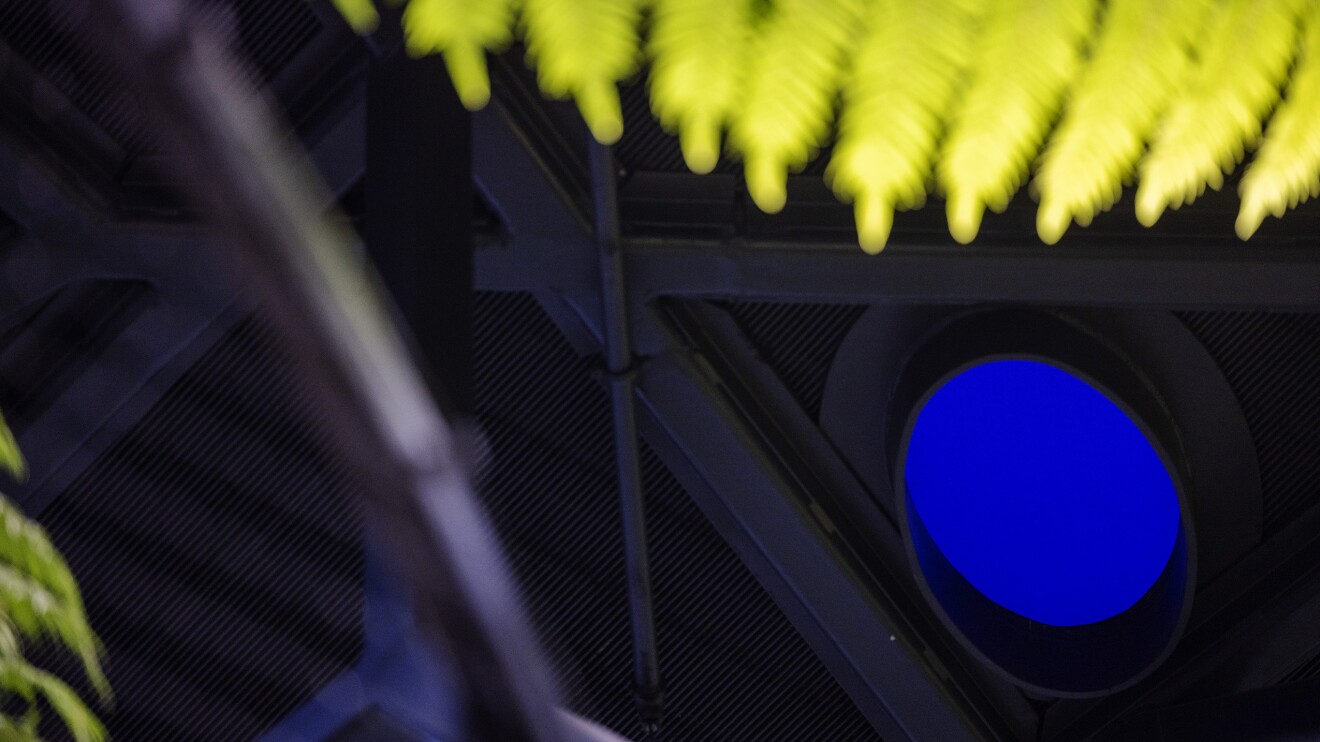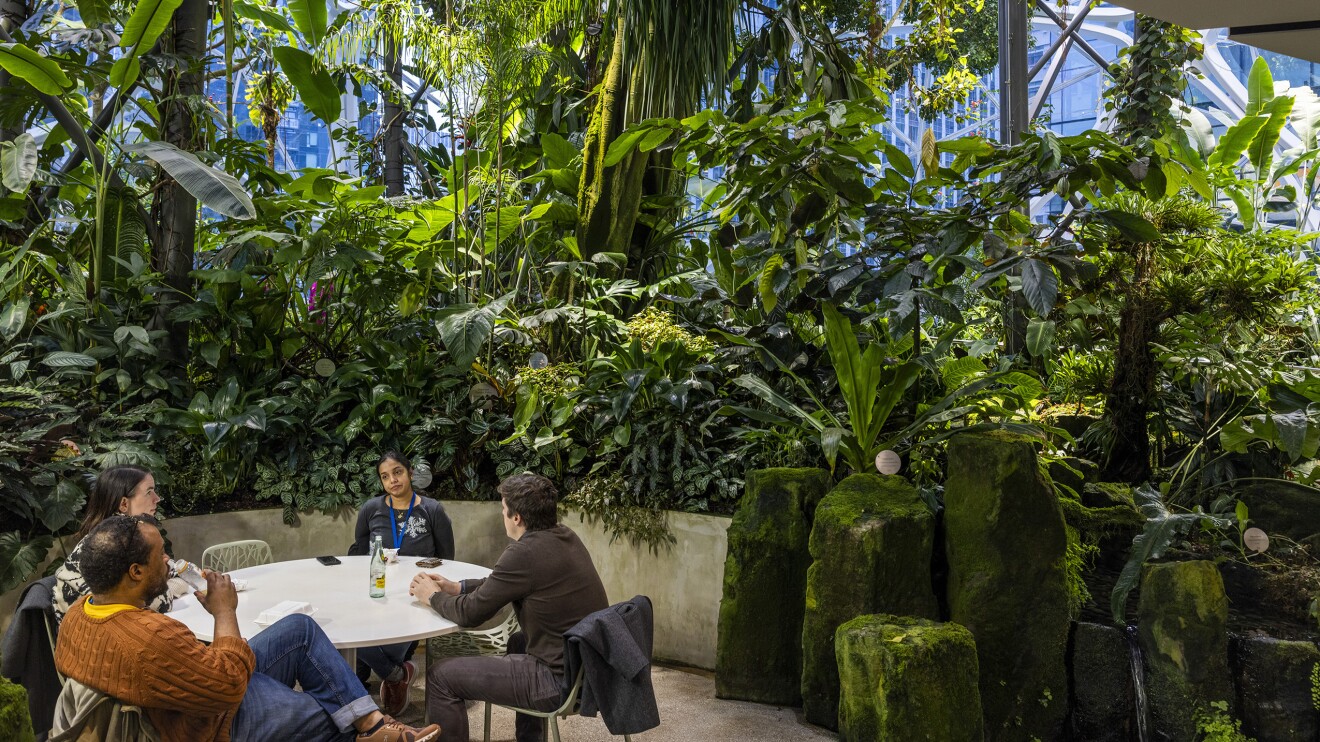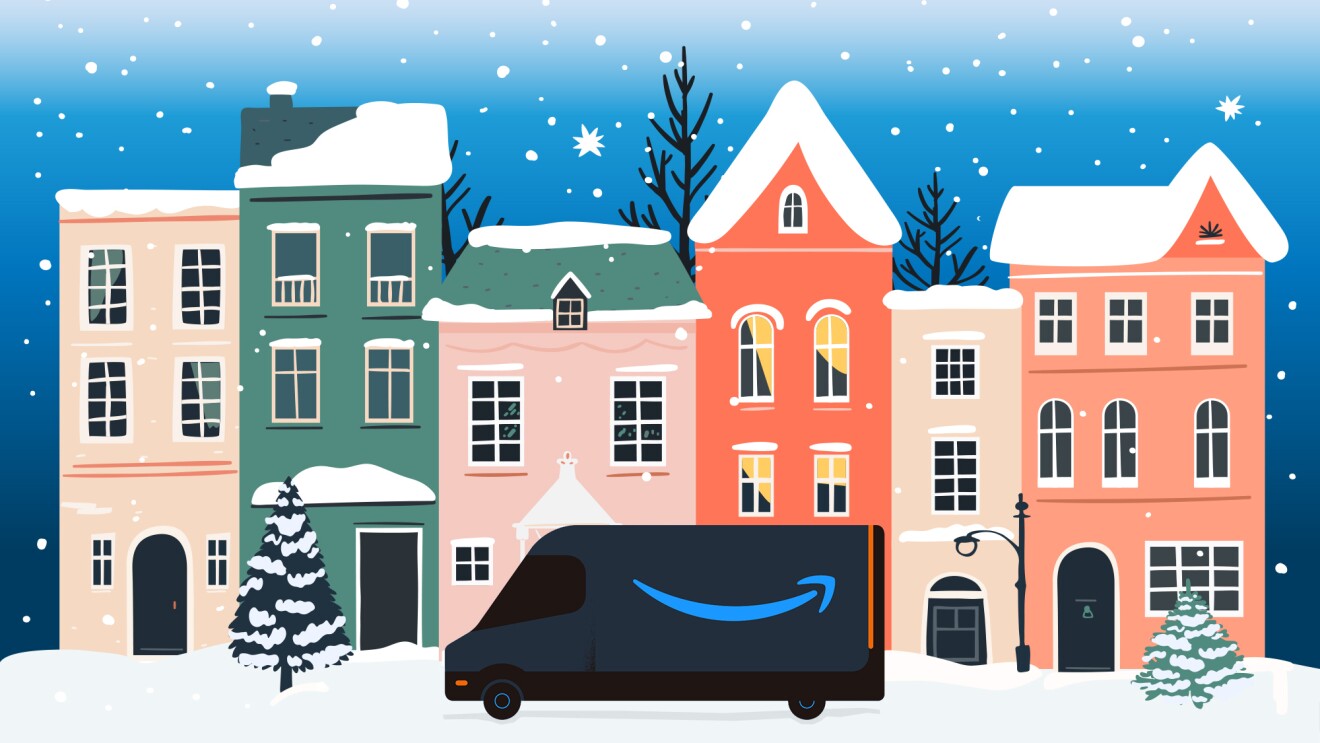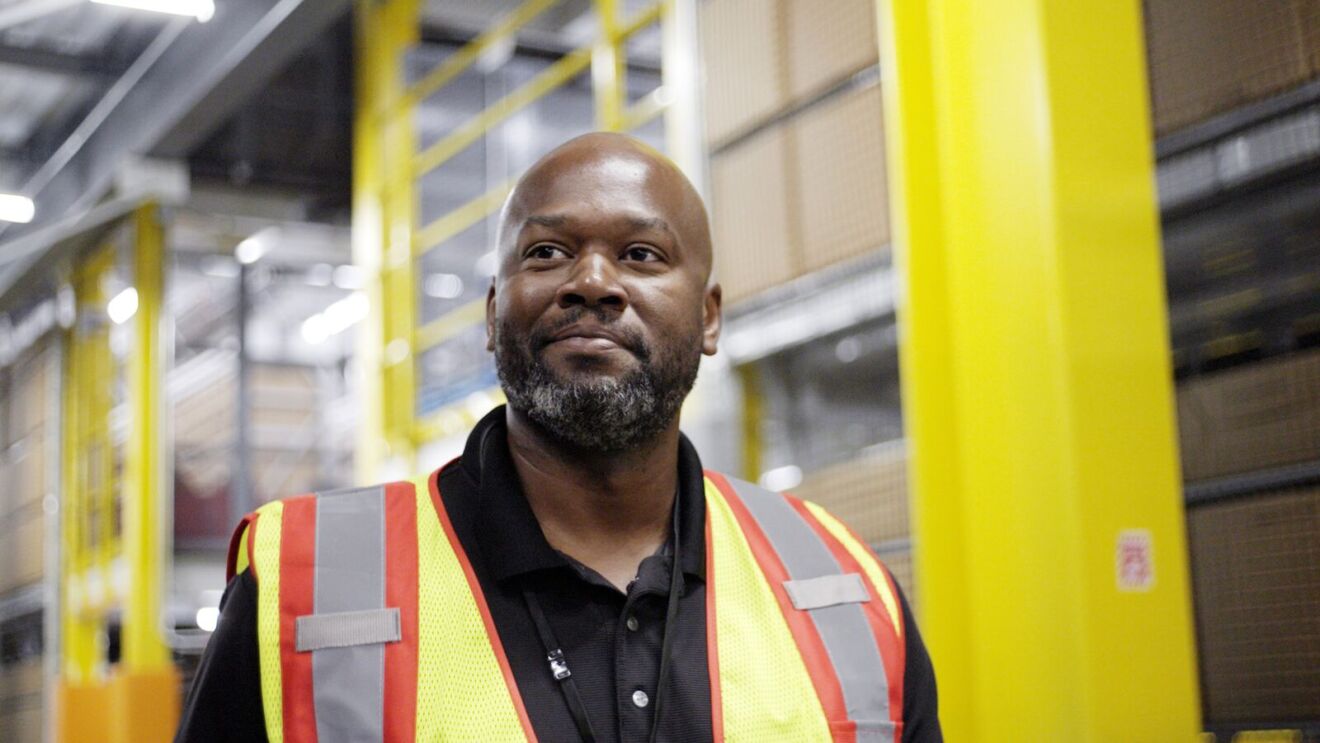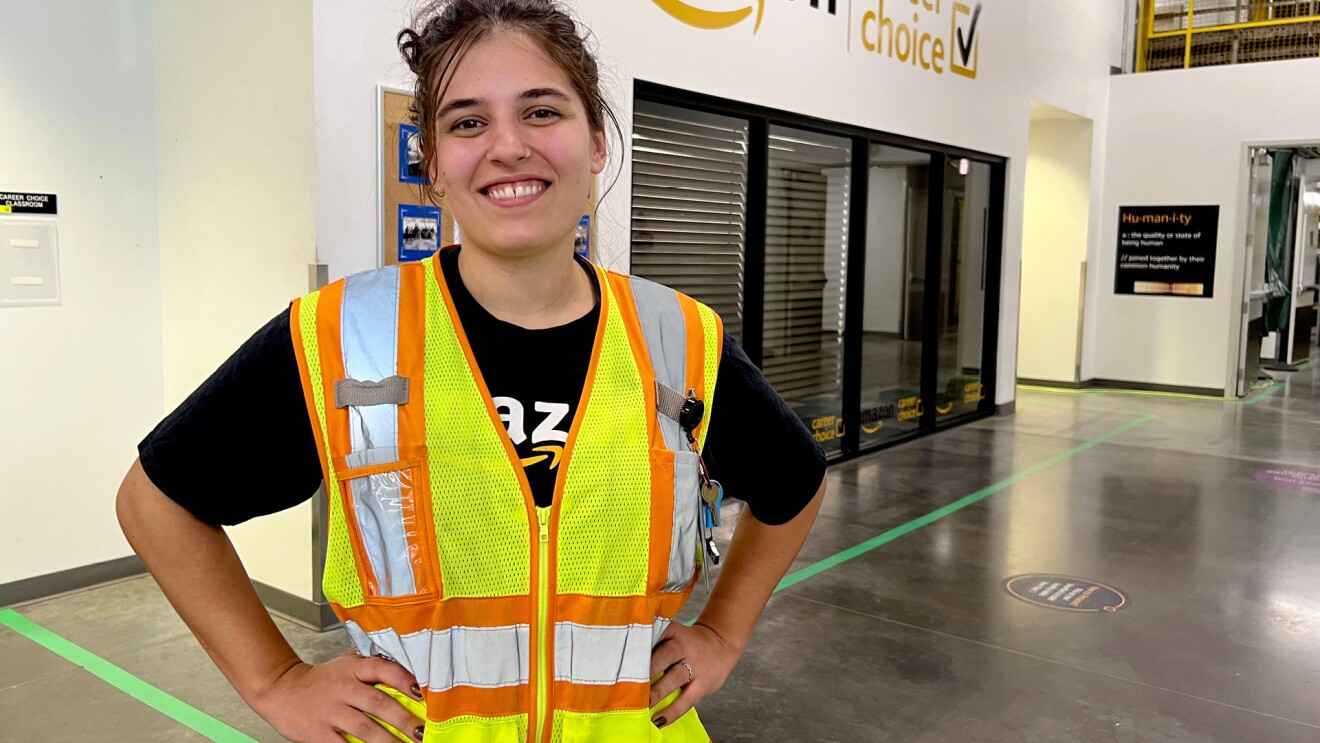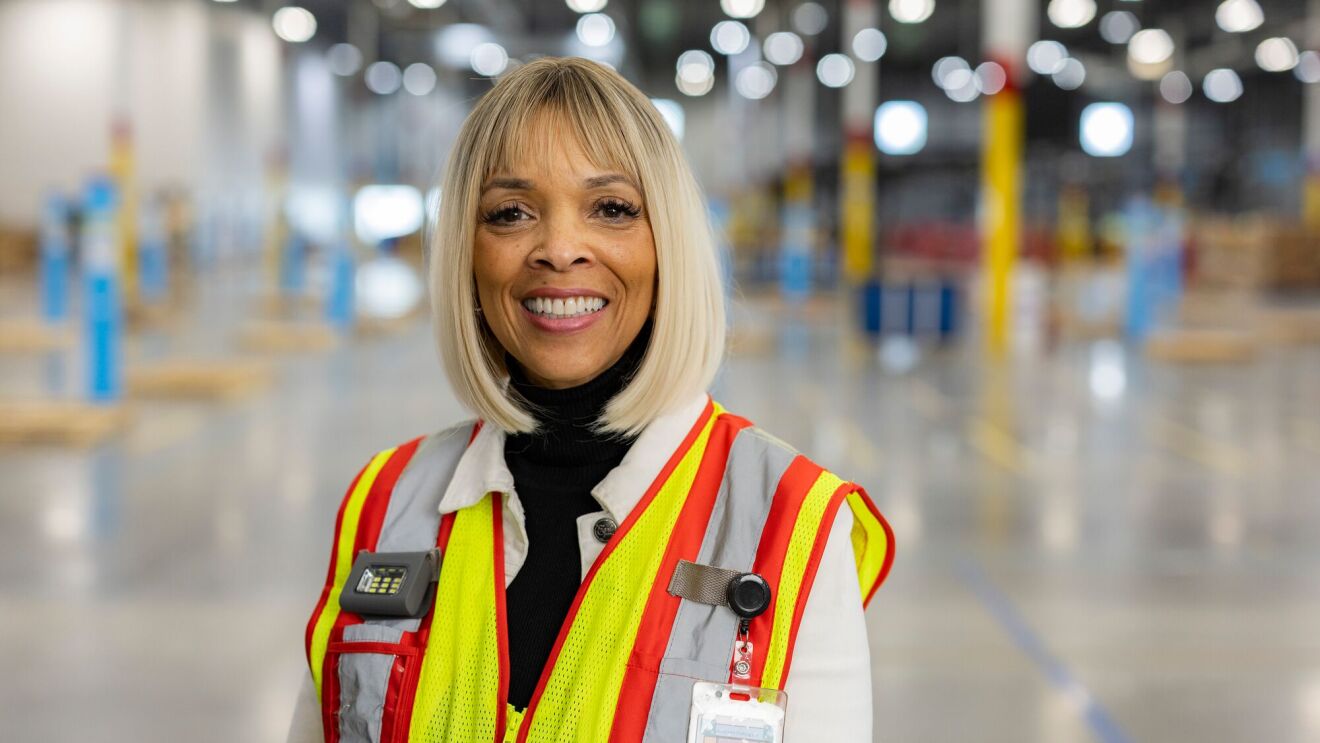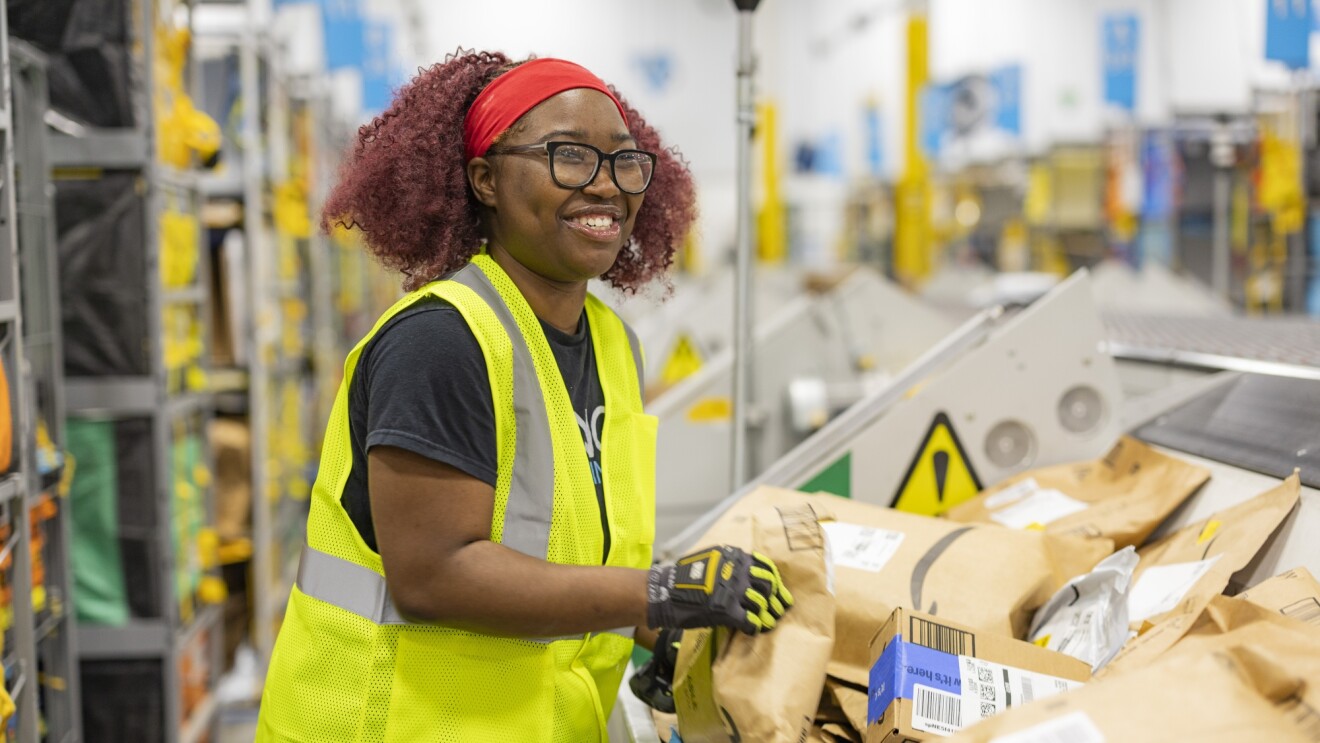Situated at the center of downtown Seattle, the Spheres offer a natural oasis in the middle of a bustling city. The three domes house four stories of waterfalls, fish tanks, and whimsical workspaces, all at Amazon’s headquarters.
Amazon broke ground on the facility in 2015 and opened its doors in 2018 to provide a natural space for employees to work and explore. The Spheres are also open to visitors and the community by reservation.

We met with Justin Schroeder, who is the real estate and facilities manager of the Spheres, a horticulturist, and an overall plant enthusiast. He’s supported the facility’s growth since the very beginning, and has provided tours for celebrities like Martha Stewart and world leaders from New Zealand and Colombia.
 Justin Schroeder, real estate and facilities manager of the Spheres.
Justin Schroeder, real estate and facilities manager of the Spheres.Photo by Lucas Jackson
We were lucky to get a tour from him too. Here are some of the coolest things he showed us during our visit.
1. 58,828-square-foot glass domes in the middle of the bustling Seattle streets
The exterior of the Spheres is a site to behold before you even step inside. Schroeder shared that the round shape of the building helps the plants get light from various angles. It also mimics shapes you’d find in nature.
The facility’s walls comprise more than 2,643 panes of glass. Crews rappel down the sides of the Spheres to clean portions of the windows every night. It can take several months to finish the job, then the cycle repeats.
2. A living chandelier
The Spheres celebrated their fifth anniversary at Amazon’s Puget Sound headquarters on June 3. Amazon marked the event with the unveiling of a new, living chandelier that will be on display for guests through the end of the month.
The suspended fixture was created by a team of in-house horticulturists at Amazon to offer guests an experience unlike anything else we’ve done before. It’s a floating island prototype that delivers a biophilic experience without soil, instead using an inert textile that simulates the conditions of a mossy branch.
 Photo by Lucas Jackson
Photo by Lucas Jackson3. Indoor waterfalls
One of the first things you see upon entering the Spheres is a large waterfall. This is the largest of several waterfalls you’ll find throughout the facility. Amazon sourced the stone for the waterfalls from local quarries in Eastern Washington, bringing a bit of the outdoors to the center of the city.
 Photo by Lucas Jackson
Photo by Lucas Jackson4. One of the largest living walls in North America
As you head up the stairs and into the facility, you’ll find a massive wall of plants. The Seattle Spheres features one of the largest indoor living walls in North America, using 4,000 square feet of mesh panels to sustain 25,000 individual plants of 200 different species.
Designer Ben Eiben and his team hand-sewed more than 300 panels for the wall, and almost all of the plants are the original plants installed five years ago.
Horticulturalists attach a basket to the top of the 65-foot wall to lower themselves down and care for each plant as needed. Schroeder said it’s an exciting task, though it was a bit scary the first time.
5. Fish from the Amazon rainforest
Most people know the Seattle Spheres for the plants, but there are other living species that call the facility home. Tanks throughout the Spheres house exotic fish from around the world. You can even see fish from the Amazon rainforest inside a large tank on the first floor. Amazon hired an expert with a doctorate in animal behavior to help design the environment within each tank and provide ongoing care to keep the fish happy and healthy.
 Photo by Lucas Jackson
Photo by Lucas Jackson6. More than 40,000 plants hailing from over 30 countries around the world
The Spheres house an astonishing number of plants from all around the world. There are more than 40,000 plants in the facility and over 1,000 species from over 30 countries. All of the plants grow in a greenhouse roughly 20 miles outside of Seattle before they find a home within the Spheres.
It takes a village to select the right plants and make sure they have the environment they need to thrive. This includes daily plant health evaluations and environmental control monitoring to make sure temperature, humidity, and lighting are stable and performing as expected. A team of six horticulturists comes in every day to perform routine plant care. A larger team of more than 15 horticulturists helps select the plants that inhabit the Spheres and other buildings across Amazon’s headquarters. Schroeder said the team typically selects plants from cooler tropical climates so they are able to thrive in an environment that is also comfortable for guests in the facility.
7. A 65-foot tree named Rubi
The largest inhabitant of the Spheres is a 40,000-pound, 65-foot tree called Rubi. The aptly named tree is a Ficus Rubiginosa that traveled 1,200 miles from California to find its home inside the Spheres.
The tree’s journey to Seattle took three days, and when it arrived, a crew removed a section of the roof and used a crane to lower it into the Spheres. Rubi has continued to thrive and grow over the years, with roots running about five feet below the surface.
8. A walkway suspended 25 feet in the air
The Canopy Walk is a wooden walkway suspended 25 feet above the base of the Amazon Spheres. The panels shift under your feet as you walk to mimic the experience of walking along a rope bridge. The walkway winds around Rubi to give guests a full view of the tree and its surroundings. There are also a couple of spots along the walkway where you can stop off and take in the views while you work.
9. A life-size nest
One of the spots to stop off along the Canopy Walk is a life-size nest called the “birdcage.” The whimsical space is reminiscent of a treehouse. The 8-by-10-foot structure is made from black locust wood, which is the sustainable hardwood you’ll find on all of the wooden structures throughout the facility.
The nest features a blue glass ball on the floor that looks like a robin’s egg when you look up at it from below.
10. The ultimate relaxation space
The third floor of the Spheres offers a quiet corner with lounge chairs where visitors can sit back and relax in the sun. Schroeder said they call it the sundeck because it’s the sunniest spot in the building.
 Photo by Lucas Jackson
Photo by Lucas Jackson11. More than 150 lights that adjust with the natural sunlight
Plants need consistent day and night cycles to maintain proper health. In order to achieve this at Seattle’s Northern latitude, there are more than 150 lights strategically placed around the building to ensure there is always 12 full hours of daylight and 12 full hours of darkness every day so the plants get what they need to thrive. Photo-sensitive cells around the building help the lights automatically adjust with the natural light coming into the building, so they’re brighter on cloudy days and dimmer when the sun is out.
Schroeder explained that the glass used for the facility’s windows blocks out infrared heat and ultraviolet light to keep the environment comfortable for guests, so the lights inside the space are designed to add some of the necessary red and blue spectrum back in to support the plants.

12. A super high-tech ventilation system
The facility uses a sophisticated ventilation system to keep fresh air cycling through. Schroeder explained that there is roughly 1.5 million cubic feet of air volume in the Spheres. Vents at the top of the building circulate air down to lower levels then pump it outside to keep it moving in a circular motion. On sunny days, the air might turn over up to six times an hour.
 Photo by Lucas Jackson
Photo by Lucas Jackson13. Serene workspaces
Booths and tables throughout the Spheres offer a space where Amazon employees have everything they need to work among the natural surroundings. Schroeder said he’s even seen some guests bring in hardware like monitors and keyboards to set up a full work station.
14. Stone pathways to fully immerse in the experience
Gazing at the plants from a booth or table is nice, but the Spheres also provide walkways for those who want to fully immerse themselves in the experience. Some pathways are even made of stone with water running through them to mimic the experience of stepping out for a walk in a natural environment.
 Photo by Lucas Jackson
Photo by Lucas Jackson15. Experts available to answer all your questions
Experts wearing pink shirts are stationed around the Spheres to greet guests and answer their questions as they roam the facility. Schroeder said some guests even walk away from these interactions with helpful tips to take care of their plants at home.
Fun fact: On any given day, there are roughly 60 to 70 people working in the Spheres—whether that be greeting guests during the day or prepping the facility in the evening.
 Photo by Lucas Jackson
Photo by Lucas Jackson16. Free bananas
All of that strolling is likely to work up an appetite. Fortunately, the Spheres have that covered too. Guests can say hello to the friendly “banistas” and pick up free bananas at the community banana stand outside the building before going about the rest of their day.
 Photo by Lucas Jackson
Photo by Lucas JacksonHow to visit the Seattle Spheres
The Spheres are open to Amazon employees and their guests Monday through Friday. They’re also open to visitors and the community by reservation on the first and third Saturday of every month via reservation only.
Learn more about reserving your spot. Check out @SeattleSpheres on Instagram for more updates, photos, and information.
Trending news and stories



